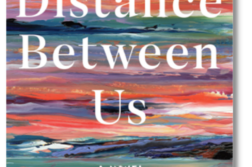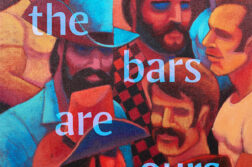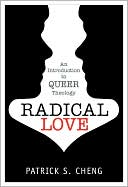 Radical Love: An Introduction to Queer Theology
Radical Love: An Introduction to Queer Theology
by Patrick S. Cheng
Seabury Books. 176 pages, $20.
“Queer theology” has for decades been betwixt and between: between queer theory and contemporary theology, the university and the seminary, the religious and the secular. This is appropriate enough, as queer theology is largely concerned with the instability of hierarchies, boundaries, and categories, as explained in Patrick S. Cheng’s helpful new introduction to the discipline, Radical Love: An Introduction to Queer Theology. But the liminal state of queer theology—too radical for most seminarians, too religious for most queer academics—has also led to a kind of invisibility, as most public religious rhetoric still wrestles with such shopworn questions as whether it’s okay to be gay and what the Apostle Paul thought about anal sex. Cheng’s book aims to change all that, rendering the basic tenets of queer theology in language simple enough for Sunday school (complete with study questions and useful indexes of leading books) yet clear and concise enough for any scholar seeking a “cultural literacy” level understanding of the field. The bulk of this slim volume actually consists of Cheng’s own queer theology of God as “a love so extreme that it dissolves existing boundaries,” and his application of that theology to the Trinity. This somewhat more sectarian aspect of the book will be of less interest to those without a stake in explaining saints, sacraments, and other Catholic doctrines. Yet Cheng’s compact history of queer theology, from the founding of the gay Metropolitan Community Church in 1968 through the AIDS crisis of the 1980’s and 90’s to today’s spectrum of GLBT and post-denominational identities, offers an important parallel history to our community’s more familiar and more secular
narratives, and may itself be a formative moment in queer theology’s “coming out” to the wider GLBT world.
Jay Michaelson
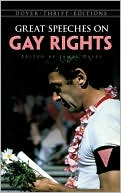 Great Speeches on Gay Rights
Great Speeches on Gay Rights
Edited by James Daley
Dover. 150 pages, $3.50
This concise volume is an intriguing testament to the idea that history is ultimately driven by the lives—and words—of individuals. Editor James Daley has arranged eighteen pivotal gay voices in speeches that date from the late 19th century to 2009. Though most of the selected speeches are American, the anthology includes contributions from three prominent 19th-century and early 20th-century Germans who stood up for homosexual rights: August Bebel’s 1898 appeal to the Reichstag for the decriminalization of homosexuality; physician Anna Rueling’s 1904 address on the topic of women’s rights and homosexual freedom; and Kurt Hiller’s 1928 gay rights speech to the Second International Congress for Sexual Reform (which was actually delivered by another pioneer of gay rights, Magnus Hirschfeld). More recent international contributions include former Canadian Prime Minister Paul Martin’s 2005 speech in support of Canada’s Civil Marriage Act and openly gay Australian legislator Ian Hunter’s passionate and deeply personal 2009 speech on marriage freedom. The American contributions include familiar names, such as Frank Kameny’s 1964 civil rights speech, Harvey Milk’s 1978 “Hope” speech, and Harry Hay’s “Unity and More in 84” address at that year’s gay pride rally in Boston. Also included is a lesser-known gem, Republican orator Robert G. Ingersoll’s 1892 funeral address for Walt Whitman. Another highlight is Jim Kepner’s lengthy 1997 speech, “Why Can’t We All Get Together, and What Do We All Have in Common,” which he delivered shortly before his death. Even on the printed
page these speeches retain their power. And it’s surprising to learn that this book is the first of its kind.
Jim Nawrocki
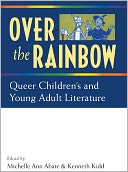 Over the Rainbow: Queer Children’s
Over the Rainbow: Queer Children’s
and Young Adult Literature
Edited by Michelle Ann Abate and Kenneth Kidd
Univ. of Michigan Press. 407 pages, $45.
This collection of essays was inspired by the 40th anniversaries of both the Stonewall riots and the publication of the first young adult novel to deal openly with homosexuality, John Donovan’s I’ll Get There: It Better Be Worth the Trip (1969). Divided into three sections, Over the Rainbow opens with “Queering the Canon,” a review of classic works of children’s fiction—such as the beloved and ever-controversial Harriet the Spy (1964), as well as Frank Baum’s Oz books—often parsing texts with no overtly gay content for hidden signifiers. Harriet is singled out for “queering” notions of time, with children who act like adults and vice versa, albeit subtly. From there we move to the years “After Stonewall,” which saw many more books that addressed homosexuality, particularly families headed by lesbian or gay parents, notably Michael Willhoite’s Daddy’s Roommate(1990) and Lesléa Newman’s Heather Has Two Mommies (1989). Other books began to address, however cautiously, the topic of hiv/aids. Finally, “Queer Readers and Writers” looks at where we are today, with video games and fan fiction that allow readers to choose not only their own adventure but their sexual orientation as characters in the story. Over the Rainbow will be a valuable resource for librarians as well as for those with an interest in what has increasingly become a genre read by adults regardless of its intended audience.
Heather Seggel
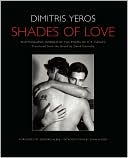 Shades of Love: Photographs Inspired by the Poems of C. P. Cavafy
Shades of Love: Photographs Inspired by the Poems of C. P. Cavafy
by Dimitris Yeros
Insight Editions. 168 pages, $75.
This is a book that falls outside of conventional parameters for review: a coffee table book filled with the homoerotic poems of C. P. Cavafy (translated from the Greek by David Connolly) each accompanied by a black-and-white photograph taken by Dimitris Yeros for this volume; but it deserves a mention. The premise on which the book is based might give some readers pause. Considering the notoriously subjective and personal nature of poetry in general, and that of Cavafy in particular, is it possible—is it right—to attempt to “illustrate” a poem, to capture its essence somehow through that most literal of media, the photograph? Yeros, of course, makes no such claim, saying only that each image was “inspired” by a Cavafy poem; and he avoids for the most part any obvious correspondence between a poetic description and a photographic element. More importantly, each visual image is powerful enough to stand on its own, apart from the poem with which it is paired. As for Cavafy’s poetry, that has always been able to stand on its own, unmolested by interpretation, and the poems shine more brightly than ever in this deluxe edition, which often features a short poem on a very large page, highlighting its gemlike economy. The photos are of men both famous and unknown, clothed and nude, alone and with other men, captured at an ideal moment, a slipping glimpse in time, giving them an eternal quality that both matches and takes leave of Cavafy’s otherworldly settings and observations out of time.
Richard Schneider Jr.



